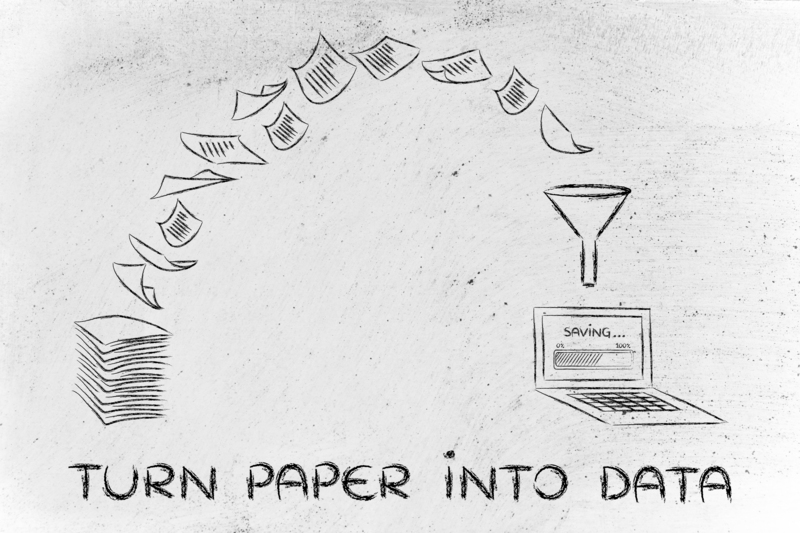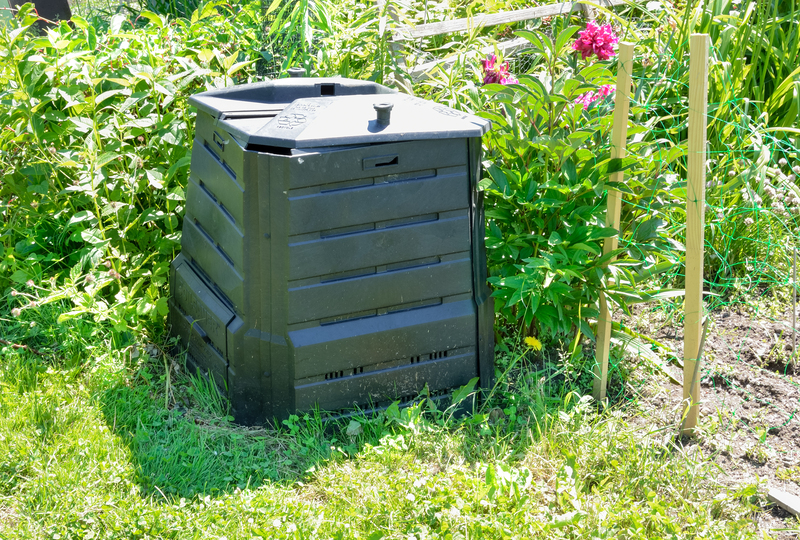Smart Hacks to Keep Clutter at Bay Following Your Initial Declutter
Decluttering your home can feel like a breath of fresh air--finally, you're free from the chaos and surrounded only by things you love or truly need. But what happens after the first big purge? Unfortunately, clutter has a sneaky way of creeping back in. If you're wondering how to maintain your tidy and organized space, you've come to the right place. In this comprehensive guide, we'll explore smart hacks to keep clutter at bay following your initial declutter, so your home remains a sanctuary, not a storage unit.

Why Clutter Comes Back (And How to Prevent It)
Understanding why clutter accumulates is the first step to permanently banishing it. Often, it's not one big mess but rather a collection of daily decisions gone unchecked. To prevent relapse, you'll need targeted clutter control strategies and maintenance routines that fit seamlessly into your lifestyle.
- Lack of Systems: Without organizing systems, items have no designated place to go, making it easier for clutter to pile up.
- Busy Lifestyles: Hectic schedules mean less time to tidy up on the go.
- Sentimental Attachments: We often keep things for emotional reasons, even when they no longer serve us.
- Procrastination: Waiting until later to tidy up often means the mess multiplies.
The remedy? Intentional habits and proactive maintenance. Let's dive into the practical, smart decluttering hacks and methods you can use every day to ensure your home stays clutter-free.
1. Implement the "One In, One Out" Rule
The "One In, One Out" method is a tried-and-true clutter prevention hack that keeps possessions at manageable levels. For every new item you bring into your home, commit to removing one existing item. This strategy works especially well for clothes, books, toys, and kitchen gadgets.
- How to Start: Place a donation bin in an accessible spot. When you buy something new, immediately add an item to the bin for donation or disposal.
- Bonus Tip: Try the "One In, Two Out" rule for even faster results!
Benefits of the "One In, One Out" Approach
- Prevents Unnecessary Accumulation
- Encourages Mindful Shopping
- Maintains a Balanced Home Inventory
2. Designate Drop Zones and Use Catch-All Trays
Clutter loves to congregate in high-traffic areas. Designate specific drop zones in your home for frequently used items like keys, mail, sunglasses, or wallets. A stylish tray or basket in the entryway or kitchen can make a huge difference.
- Set Up: Place attractive bowls, trays, or baskets near your entryway, on your nightstand, or in high-use areas. Encourage family members to use them daily.
- Weekly Reset: Once a week, take a few minutes to empty and reorganize these catch-alls to prevent overflow.
Pro Tip: Label baskets or trays for specific uses (like "Mail" or "Charging Station") to keep things sorted and avoid confusion.
3. Schedule Regular Mini-Declutters
Big decluttering sessions are transformative, but it's the smaller, ongoing efforts that make a lasting difference. Schedule 10-15 minutes a day or a deep-dive session each week to review a drawer, shelf, or cabinet. This habit will keep clutter at bay before it becomes overwhelming.
- Daily Tidy Time: Set an alarm or reminder for a short clean-up before bedtime.
- Weekly Targets: On weekends, pick one area--like your bathroom vanity, entry closet, or junk drawer--to quickly declutter.
How to Stay Consistent?
Attach your mini-declutter to an existing routine, such as right after dinner or before watching your favorite show. Consistency is key to long-term clutter control.
4. Use Smart Storage Solutions
Invest in functional storage solutions that suit your home and lifestyle. Vertical shelving, under-bed storage bins, adjustable closet systems, and stackable containers all increase capacity without expanding your home's footprint.
- Maximize Space: Go vertical with wall-mounted shelves or over-the-door organizers.
- Optimize Hidden Spaces: Use under-bed boxes for seasonal clothes and rolling carts for multipurpose storage.
- Clear Containers: Transparent bins help you see what's inside at a glance, reducing "forgotten item" clutter.
Bonus Hack:
Label everything! Use a label maker or decorative tags to identify bin contents or shelf purposes. This extra step discourages mindless dumping and reinforces your clutter-free home routine.
5. Maintain a Donation Station
A dedicated donation station encourages continuous declutter maintenance. Place a box or bag in your closet, garage, or mudroom where you and your family can drop items you no longer need.
- Fast and Frictionless: Every time you realize you don't use or want something, toss it in the donation area. Once it's full, deliver it to your favorite charity.
- Community Impact: Regular donations help others and curb the temptation to "hold on just in case."
6. Embrace the Digital Age: Go Paperless
Paper clutter--from bills, flyers, owner's manuals, to sentimental cards--accumulates faster than you think. Switch to digital whenever possible:
- Sign up for E-Statements: Get bank, utility, and credit card statements online.
- Scan and Store: Digitize important documents using apps or scanners. Back up to the cloud for peace of mind.
- Say Goodbye to Junk Mail: Opt out of unsolicited mail at DMAchoice or similar services.
Establish a Routine
Sort mail and paperwork immediately, recycling or shredding what you don't need. A weekly or monthly scan of your files ensures they stay organized and easy to access.
7. Be Strategic with Shopping and Gifts
The simplest decluttering hack is to prevent excess from entering your home in the first place. Practice mindful shopping and gift-giving:
- Stick to Lists: Shop with intention and avoid impulse purchases.
- Experience Over Things: Gift experiences (tickets, classes, trips) instead of objects to friends and family.
- Request Consumables: For birthdays or holidays, ask for items you'll use up--like candles, special foods, or toiletries--rather than new possessions.
Clutter Prevention Mindset
Before making a purchase, ask yourself: "Do I have space for this? Will it add value to my life?" Being intentional limits regret--and future clutter.
8. Assign a Home for Everything
A common cause of clutter is items not having a consistent, logical place to belong. Give every item in your home a "home".
- Group Similar Items: Store all batteries, for example, in one clear box. Store all cleaning supplies together, separate by room type if helpful.
- Use Dividers: Drawer or container dividers help keep small items sorted.
- Make It Easy to Put Things Away: Don't overfill cabinets and drawers; allow space for items to return to their spot easily.
Family Participation
Teach kids and other family members about where things belong and include them in the maintenance routine. Having everyone on board prevents "orphan" items and encourages shared responsibility.
9. Set Boundaries and Respect Limits
Maintaining clutter-free living means honoring the boundaries you set. Allocate reasonable limits for how much of each category you'll keep (such as "no more than 20 hangers in my closet" or "a single toy basket per child"), and stick to it.
- Use Containers as Guides: When a container is full, it's time to reassess and let go of something.
- Seasonal Review: At the start or end of each season, review and edit your collections to prevent over-accumulation.
10. Adopt the "Five-Minute Reset" Habit
A powerful antidote to the slow-creep of clutter is the daily "Five-Minute Reset." Before bed or after dinner, set a timer for five minutes and tackle visible clutter: return items to their spots, clear counters, and straighten shelves.
- Involve the Family: Make it a group effort for maximum impact and minimal effort.
- Build the Habit: Over time, these mini-resets become automatic, greatly reducing the effort required to keep a tidy space.
Room-by-Room Quick Hacks to Prevent Clutter's Return
Entryway
- Install hooks at kid and adult height for bags and jackets
- Use a shoe rack or bench to corral footwear
- Keep a small bin for reusable bags and rotating seasonal gear
Kitchen
- Declutter countertops daily
- Limit gadgets to essentials and store infrequent-use items out of sight
- Use clear bins for pantry staples and label them clearly
Living Room
- Baskets for toys and blankets
- Use furniture with hidden storage like ottomans or coffee tables
- Regularly edit books, magazines, and decor
Bedroom
- Limit nightstand contents to essentials
- Store seasonal clothes out of sight
- Make bed every morning for instant order
Home Office
- Scan and digitize paperwork regularly
- Clear your desktop at the end of each day
- Store supplies in labeled drawers or caddies

Summary: Key Takeaways for Clutter-Free Living
- Prevent clutter from returning by using intentional systems and routines
- Set realistic boundaries on the number of possessions you own per category
- Make smart storage work for you by investing in versatile bins, shelves, and organizers
- Schedule regular maintenance through tiny, consistent declutter sessions
- Encourage participation from all family members and celebrate progress
Staying organized isn't about perfection or having a designer home. It's about creating a space that serves you, supports your goals, and brings you peace. By applying these SMART hacks to keep clutter at bay after decluttering, you'll set yourself up for a tidier, happier home--one day at a time.
Ready to Stay Clutter-Free?
Commit to one or two of these post-declutter hacks today. Remember: it's easier to maintain a clutter-free home than to start over. Small, consistent actions lead to lasting change--and a space you truly love.
If you've made it this far, you're already on the path to clutter-free living! Share your favorite strategies or success stories in the comments below, and keep the momentum going.